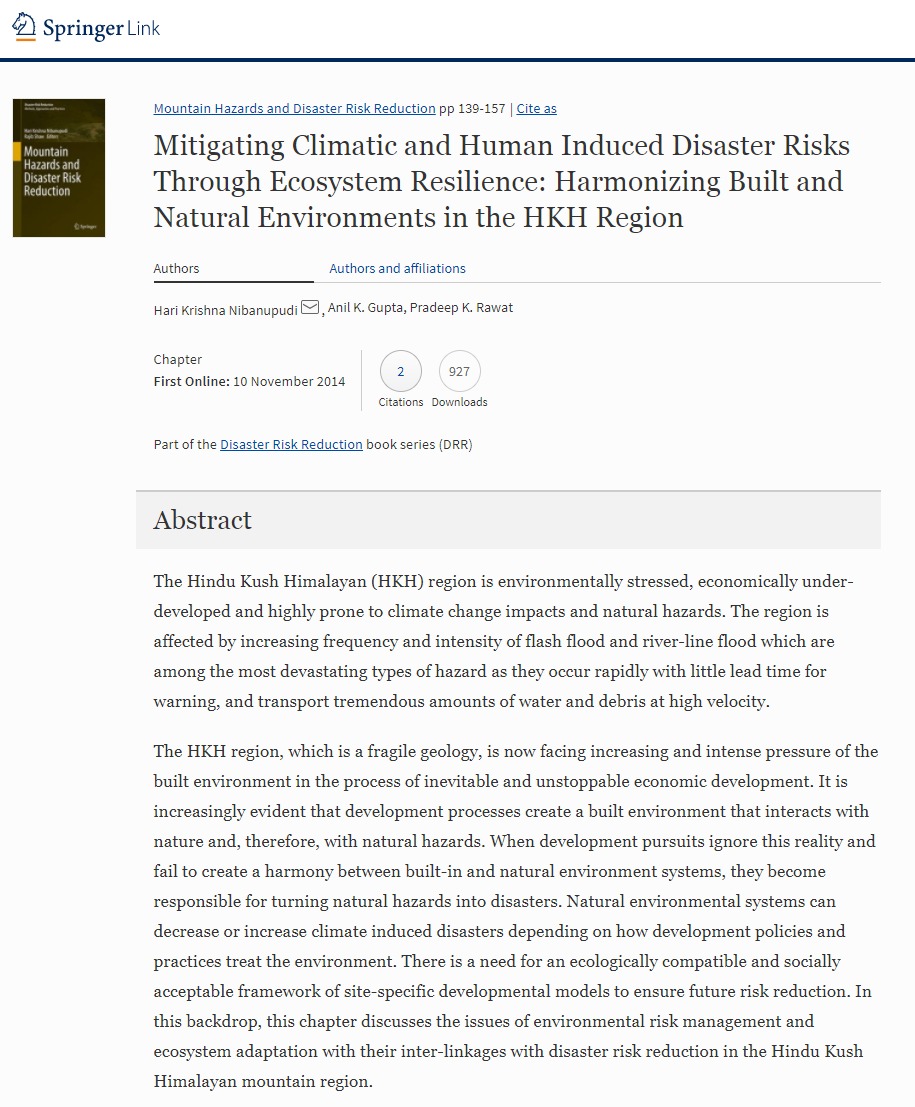
The Hindu Kush Himalayan (HKH) region is environmentally stressed, economically under-developed and highly prone to climate change impacts and natural hazards. The region is affected by increasing frequency and intensity of flash flood and river-line flood which are among the most devastating types of hazard as they occur rapidly with little lead time for warning, and transport tremendous amounts of water and debris at high velocity. The HKH region, which is a fragile geology, is now facing increasing and intense pressure of the built environment in the process of inevitable and unstoppable economic development. It is increasingly evident that development processes create a built environment that interacts with nature and, therefore, with natural hazards. When development pursuits ignore this reality and fail to create a harmony between built-in and natural environment systems, they become responsible for turning natural hazards into disasters. Natural environmental systems can decrease or increase climate induced disasters depending on how development policies and practices treat the environment. There is a need for an ecologically compatible and socially acceptable framework of site-specific developmental models to ensure future risk reduction. In this backdrop, this chapter discusses the issues of environmental risk management and ecosystem adaptation with their inter-linkages with disaster risk reduction in the Hindu Kush Himalayan mountain region.